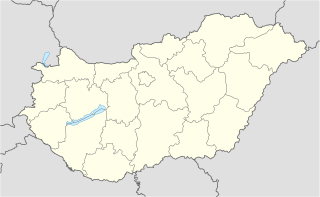Istállós-kő cave
| Istállós-kő cave
|
||
|---|---|---|
| Location: | Szilvásvárad , Heves County , Northern Hungary | |
| Height : | 535 m above sea level NN | |
|
Geographic location: |
48 ° 4 '18 " N , 20 ° 25' 8" E | |
|
|
||
| Cadastral number: | 5341-1 | |
| Type: | Fracture joint cavity | |
| Lighting: | No | |
| Overall length: | 57 meters | |
The 535 m high Istállós-kő-Cave ( Hungarian Istállós-kői-barlang ) in the Bükk Mountains , in Heves County , ( Northern Hungary ) contained finds of stone tools and bone spear points from the Aurignacia of the Paleolithic . The Istállós-kő is at 958.1 m the second highest peak in the Bükk Mountains.
The lower layer of the cave contained about 50 spearheads made of bone with a split base, which are part of the Aurignac points . The upper, subarctic layer reaches an age of around 31,000 years, which has been corroborated by radiocarbon dating . This layer contains spearheads of a different type, not having a split but a massive base. Such bone points are called Lautscher points . The three by four meter stone-lined fireplace contained charcoal and numerous animal bones, 80% of which were those of young cave bears . Based on the penis bones found, there were around 2000 animals. A special feature is an approximately 45,000 year old, 12 cm long bone flute .
literature
- I. Vértes: New excavations and paleolithic finds in the Istállóskö cave. Acta Archaeologica Academiae Scientiarium Hungaricae, 5, pp. 111-291, Budapest 1955
- Nicolas Teyssandier: New Perspectives on the Beginnings of the Aurignaciens . Announcements of the Society for Prehistory, 14, pp. 11–24, 2005 ( PDF , German)
- Hugo Gross : The middle worm in Central Europe and neighboring areas. Ice Age and Present, 15, pp. 187–198, Öhringen 1964 ( PDF , German) doi : 10.3285 / eg.15.1.14

